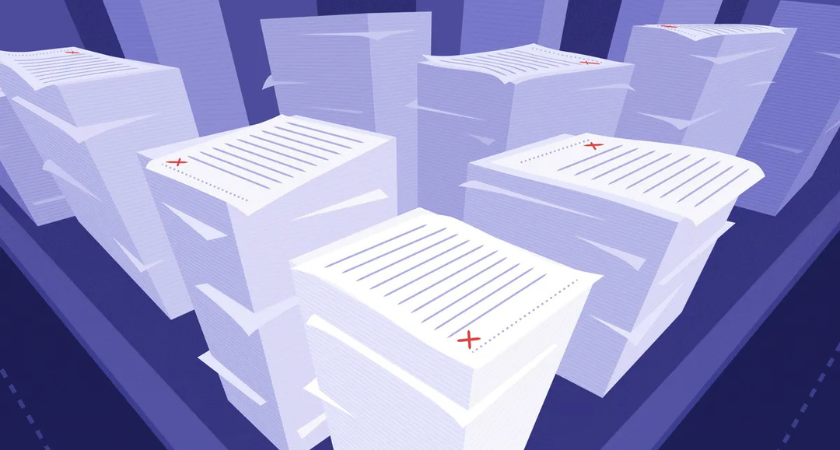
As demand for artificial intelligence and cloud infrastructure surges, construction firms are racing to secure data center contracts across the United States. But attorneys warn that while these mega-projects look profitable on the surface, the real battles happen in the fine print.
.webp)
Data centers may resemble warehouses from the outside, but the contracts behind them are highly complex, attorneys say. Projects have accelerated nationwide, with developers, tech giants and hyperscalers competing to bring capacity online. This has created a high-stakes legal environment where contractors face intense pressure, tight schedules and rising material volatility.
Recent deals highlight the boom. Apple announced plans to invest at least $20 billion in two new Pennsylvania data centers earlier this year. Hyperscaler CoreWeave also hired a joint venture of Turner Construction and Wohlsen Construction for a $6 billion facility, signaling the aggressive spending underway.
But landing these jobs comes with risk.
“Data center projects tend to be relatively simple structures with really sophisticated power and utility needs and really unique equipment requirements,” said Andrew Greene, office managing partner at Perkins Coie in Seattle. “From a risk management standpoint, it’s more dealing with supply chain issues, dealing with labor issues.”
Construction attorneys note that many of these deals rely on engineering, procurement and construction (EPC) contracts or turnkey frameworks. Under these structures, the contractor is responsible for design, materials, and delivery—streamlining ownership, but concentrating liability.
“What makes it more complicated is the amount of regulation that goes into a lot of these contracts,” said Trent Cotney, partner and construction team leader at Adams & Reese. “There is adherence to fire codes, NFPA, NEC, permitting related issues, all those types of things.”
Speed dominates the current market. With AI and cloud providers seeking capacity as quickly as possible, fast-track delivery has become standard.
That urgency increases risk dramatically.
The rush to build swiftly “puts a big burden on the contractor,” Cotney said. Greene added that many data centers are built in remote areas where skilled labor is scarce, creating more room for missteps.
“We do a lot of OSHA defense for construction and general industry, and unfortunately, we’ve had some incidents on these types of projects,” Cotney told Construction Dive. “Anytime you’re dealing with high voltage, this level of fast track, it requires operational excellence. Navigating safety in this type of environment is absolutely critical.”

Copper, a central component for wiring and power infrastructure, is one of the biggest risk factors in contracts today.
“Copper is a pretty important element of a lot of the equipment that goes into these types of projects,” Greene said. Price volatility—driven partly by tariffs—can affect both availability and cost.
Cotney warned contractors may not feel cost increases immediately, as tariffs often take four to 12 months to appear in the supply chain.
To hedge, firms are inserting price acceleration clauses, using tariff-specific language tied to Customs data, or negotiating pre-purchase agreements.
“The end result is where you’re basically going to the end user, the owner or developer, and saying here is the tariff hit. Here is the direct impact of that. Here’s a change order reflected on that,” Cotney said. “And you have a contractual basis to do that.”
Other materials—like aluminum, fiber optics, lithium batteries, transformers, generators, and refrigerants—also pose challenges. Cooling systems, in particular, face regulatory uncertainty.
“There have been a variety of EPA regulations in the past that truncated what cooling systems can be used,” Cotney said. “So, being able to obtain the refrigerants needed to power these giant cooling systems within these data centers is something that’s unique.”
Emerging liquid cooling technologies could change contract language in the future, he added.
“I think there’s going to be some major evolution of how we go about cooling these things to make it more efficient,” Cotney said. “But for now, refrigerant is a concern.”
Labor availability—and legality—is another major risk. Projects may rely on electricians and mechanical workers with temporary immigration status, complicating payroll compliance.
“A lot of the workforce that I see being used on these data center projects are under H-2B or temporary protective status,” Cotney noted. Some owners now require certified payrolls even when not federally mandated.
Cybersecurity is also now written directly into contracts.
“What are we doing to protect information that is going to be conveyed on this construction because access to how this thing was built could, if it falls in the wrong hands, potentially be a huge cyber threat,” said Cotney. “Confidentiality, cybersecurity protection, even as it relates to the contract and the contract documents, is critical.”
Despite the hazards, attorneys agree that data centers are among the most lucrative construction opportunities in today’s market.
“This is where the money is at right now. There is a lot of money being put out both by government and private industry to move this forward light speed,” Cotney said. “So, ton of profit, but also a lot of risk and I think you need to assess it in your contract.”
Originally reported by Sebastian Obando in Construction Dive.